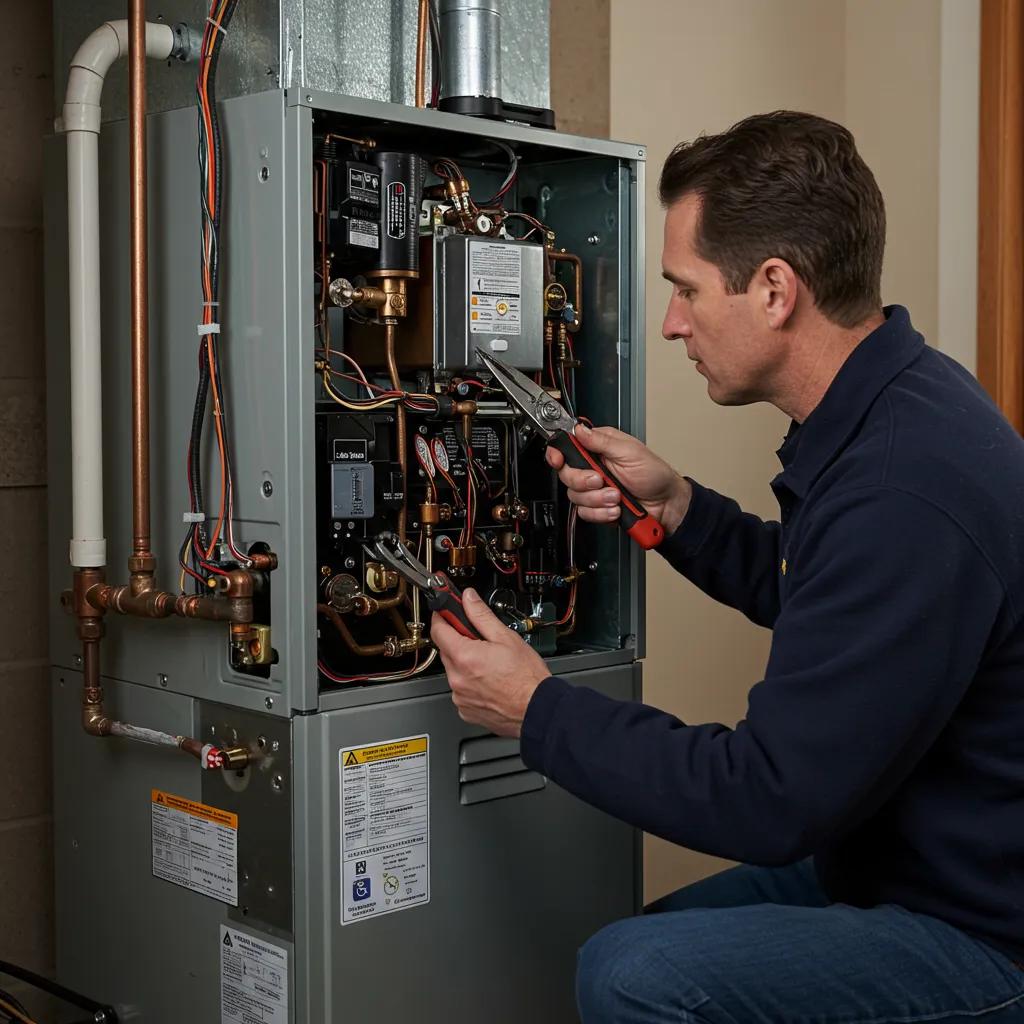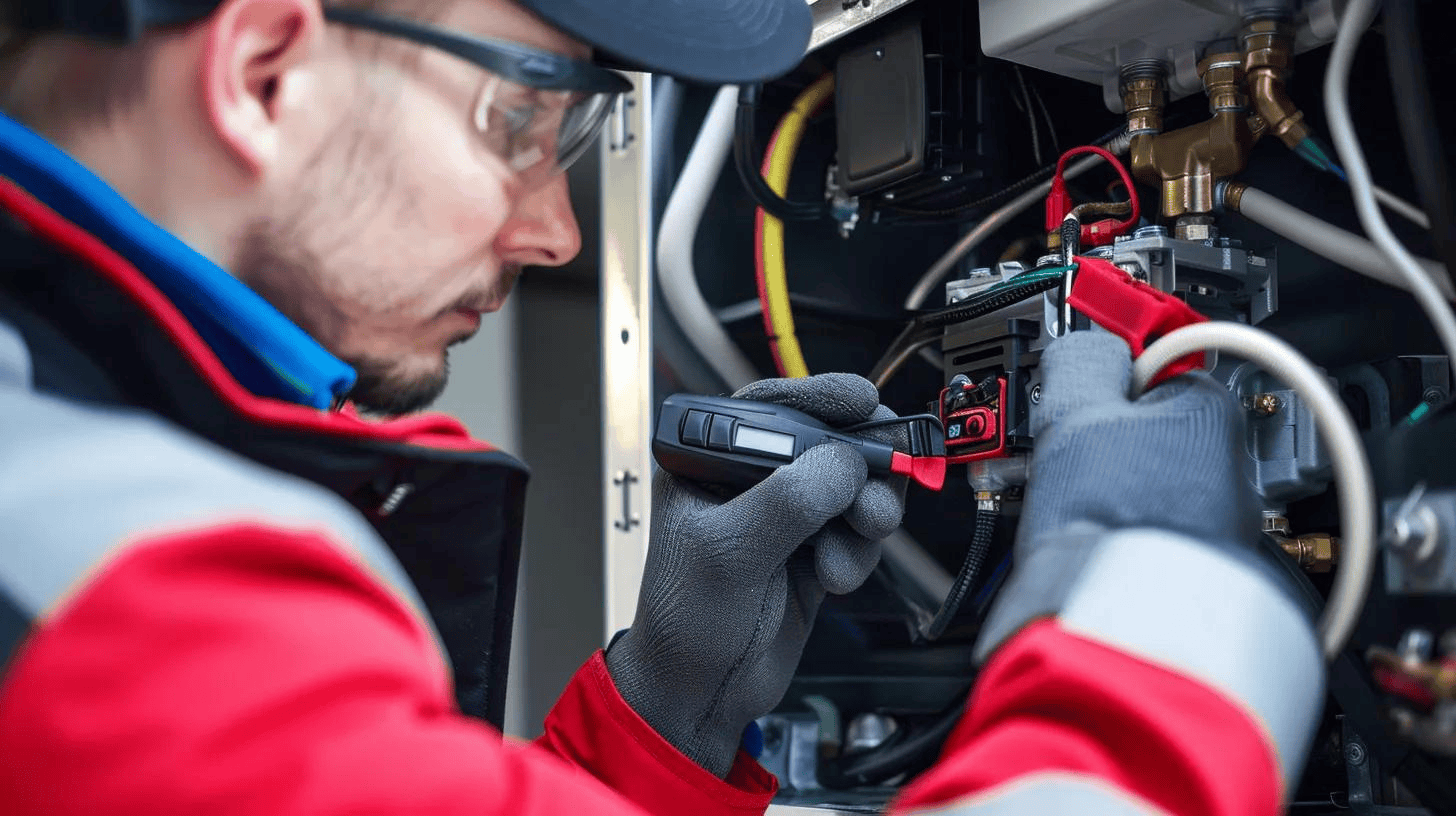Reliable Furnace & Heat Pump Repair in Plant City, FL

Heating Repair in Plant City, FL: Expert Furnace and Heat Pump Services for Reliable Comfort
A sudden loss of heat or a heat pump that won’t engage creates immediate discomfort and safety concerns for Plant City homeowners, and knowing practical diagnostics plus professional options saves time and expense. This article explains how heating repair in Plant City works, including furnace repair, heat pump repair, preventative maintenance, and emergency response best practices that help you restore steady indoor comfort. You’ll learn clear symptom-to-solution troubleshooting tips, when to stop DIY fixes and call a licensed technician, and what to expect during diagnosis and repair. The guide also maps local considerations for Florida’s mild winters, cost drivers for repairs, and maintenance strategies that extend equipment life and improve energy efficiency. Finally, we outline the customer process for arranging service and note local provider options and protections — including availability of 24/7 emergency service, maintenance plans, financing, and discounts — so you can act quickly when heating problems arise.
What Are the Most Common Heating Repair Services in Plant City, FL?
Common local heating repair services cover furnace repair, heat pump repair, thermostat and control troubleshooting, component replacement, and ductwork or airflow corrections that restore proper heating performance. These services address both mechanical and control-system failures and include systematic diagnostics, targeted part replacement, safety testing, and post-repair validation to ensure reliable operation. In Plant City’s climate, heat pumps are commonly used for both heating and cooling, so seasonal service and defrost checks are frequent repair needs. Understanding which service fits a set of symptoms helps homeowners prioritize repairs and know what to expect from a service visit.
This table compares the typical service types by common problems, typical fixes, and symptom indicators to help homeowners choose the right repair path.
This comparison clarifies how different systems produce overlapping symptoms and why professional diagnostics target root causes before suggesting parts replacement or further action. For homeowners wanting a local option, First Response Heating & Cooling provides heater repair coverage for furnaces and heat pumps in and around Plant City with 24/7 emergency response and maintenance plans; call or email to discuss availability and scheduling.
How Does Furnace Repair Address Typical Heating Issues?

A furnace repair visit begins with a systematic safety check and visual inspection to diagnose symptoms such as no heat, unusual noises, or frequent cycling, and then proceeds to targeted component tests and repairs. Technicians test ignition components, inspect the heat exchanger for cracks, examine the blower motor and belt, and verify combustion safety systems like the flame sensor. For homeowners, simple checks—replacing a clogged filter, confirming thermostat mode and batteries, and ensuring the breaker is on—can resolve minor issues before a service call. If repairs involve parts replacement or access to sealed components, a professional visit is advised to maintain safety and system efficiency.
These diagnostic steps not only fix immediate failures but also reveal related issues such as compromised airflow or control faults that lead to recurring problems. Knowing the likely technician actions helps you prepare the system details and schedule for an efficient repair visit.
What Heat Pump Repair Solutions Are Available Locally?
Heat pump repair in Plant City focuses on refrigerant-related faults, compressor or reversing valve failures, defrost cycle problems, and electrical or control issues that prevent the unit from switching between heating and cooling properly. Technicians will measure pressures, inspect coils for frost or ice buildup, test the reversing valve and contactors, and evaluate the thermostat and sensors for correct signaling. Since heat pumps run year-round in Florida, seasonal inspections often reveal wear that, when addressed early, avoids emergency breakdowns during cooler nights.
Homeowners can assist by reporting precise symptoms—continuous running, weak airflow, or visible ice—and by maintaining clean filters and clear outdoor units. Prompt diagnosis reduces the chance of major component failure and restores efficient heating with the least downtime.
Common homeowner actions before calling a pro:
- Check thermostat mode and replace batteries if needed.
- Inspect and replace clogged air filters.
- Clear debris around outdoor units to ensure airflow.
How Can You Identify and Troubleshoot Common Heating Problems in Plant City?
Identifying heating problems starts with observing symptoms and performing basic checks to distinguish a simple fix from a serious fault requiring a professional. Key symptoms include no heat, uneven heating, strange noises, unusual odors, and sudden spikes in energy use; each symptom points to different subsystems such as controls, airflow, combustion, or refrigeration. Homeowners should follow a structured troubleshooting sequence—verify thermostat settings, check power and breakers, replace filters, and look for obvious airflow obstructions—before escalating to a service call. This approach narrows the likely causes and helps technicians arrive with the right tools and parts.
Knowing when to stop DIY troubleshooting is crucial; safety-sensitive signs like a gas smell, burnt electrical odor, or visible combustion problems require immediate professional attention. The checklist below helps prioritize homeowner actions and indicates urgency levels for contacting a heating contractor.
- Basic checks to try first: Verify thermostat, change filter, confirm breaker and switch.
- Moderate concern actions: Listen for unusual compressor or motor noises, inspect vents for blockages.
- Immediate professional response: Gas odor, smoke, excessive vibration, or persistent failure after basic checks.
These steps reduce wasted service costs and improve the speed of repair by focusing technician efforts on plausible causes identified during homeowner triage. When in doubt, documented symptom details accelerate diagnosis during the repair visit.
What Are the Signs Your Furnace Needs Repair?
Warning signs that a furnace requires repair range from total loss of heat to recurring short-cycling, loud or unusual noises, and smells indicating electrical or combustion issues; each sign suggests a different urgency level. No heat or weak heat typically indicates ignition problems, a failed blower, or airflow restriction, while frequent cycling often points to thermostat or airflow problems that strain components. Strange banging or grinding sounds can signal mechanical wear such as a failing blower motor or belt, and any persistent burning or rotten-egg smell demands immediate professional attention due to potential safety hazards. Acting early on these signs prevents secondary damage and preserves efficiency.
Documenting when the symptom began, what conditions preceded it, and any intermittent patterns helps technicians diagnose faster and recommend the most cost-effective repair or replacement path.
How to Recognize Heat Pump Malfunctions and Fixes?
Heat pump-specific malfunctions include failure to switch modes, continuous running without reaching set temperature, ice buildup on outdoor coils, and loss of refrigerant pressure; each symptom suggests targeted checks and likely repairs. If the unit won’t switch between heat and cool, technicians inspect reversing valve and control board signals, while continuous running may indicate thermostat or airflow problems. Ice accumulation usually points to defective defrost controls or low refrigerant, and loss of heating capacity often stems from refrigerant leaks or compressor decline. Homeowners can reduce diagnostic time by noting performance during both day and night, as defrost behavior is seasonal and may expose intermittent faults.
Prompt attention to these indicators preserves compressor life and maintains seasonal efficiency in Plant City’s variable winter conditions.
Frequently Asked Questions
What should I do if my heating system is making strange noises?
If your heating system is producing unusual sounds, it may indicate a mechanical issue that requires attention. Common noises include banging, grinding, or hissing, which can signal problems like a failing blower motor, loose components, or airflow restrictions. It's advisable to turn off the system and check for any visible issues, such as loose panels or debris. If the noises persist, contact a professional technician to diagnose and resolve the issue before it leads to more significant damage or safety hazards.
How can I improve the energy efficiency of my heating system?
Improving the energy efficiency of your heating system can be achieved through regular maintenance and simple upgrades. Start by replacing air filters every 1-3 months to ensure proper airflow. Consider scheduling annual professional inspections to catch potential issues early. Additionally, sealing ductwork and insulating your home can prevent heat loss. Installing a programmable thermostat allows for better temperature control, reducing energy consumption when you're not home. These steps not only enhance efficiency but can also lower your energy bills significantly.
What are the benefits of regular heating system maintenance?
Regular maintenance of your heating system offers numerous benefits, including improved efficiency, extended equipment lifespan, and reduced risk of unexpected breakdowns. Scheduled inspections allow technicians to identify and address minor issues before they escalate into costly repairs. Maintenance tasks, such as cleaning components and checking refrigerant levels, ensure optimal performance and safety. Additionally, many providers offer maintenance plans that include priority service and discounts, making it easier to keep your system in top condition while saving money in the long run.
Conclusion
Ensuring reliable heating in your home is essential for comfort and safety, especially during the cooler months in Plant City. By understanding common heating issues and knowing when to seek professional help, you can maintain a warm and efficient living environment. Don't hesitate to reach out to First Response Heating & Cooling for expert assistance and tailored maintenance plans that fit your needs. Schedule your heating repair service today to ensure your home stays cozy and safe all winter long.

Service Areas


